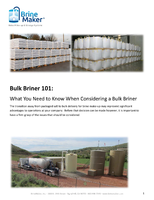Carbon Emitters utilize infrared heating technology.
Press Release Summary:
Suitable for all medium-wave applications, Carbon Emitters match temperatures to optimum absorption wavelength for each application, eliminating overheating and contamination of sensitive substrates. Standard units provide max output of 2.5 µm, while High Power Carbon Emitters produce 3 µm. At irradiation of 120 W/in.², effective power density is 28 W/m². Units can dry printing inks and heat plastics in targeted manner, with minimal heating of surrounding environment.
Original Press Release:
Tech Center Spotlight: Carbon Emitters
Infrared Heating Technology
Infrared emitters transmit large amounts of energy in a short time and at high efficiency. The wavelength of the infrared radiation has a crucial effect on the effectiveness of the heating process. Infrared emitters, which are optimally matched to the materials to be heated, provide energy savings of up to 50%. Heraeus infrared heating technology offers significant advantages: heat exactly where it is needed, with the optimum wavelength for the product and in line with the process.
High heating efficiency and rapid cool down make the mediumwave carbon emitter from Heraeus the only medium-wave emitter to offer you shortwave response times. Suitable for all medium-wave applications, this emitter also offers the capability to match temperatures to the optimum absorption wavelength for each application. Together, these features eliminate overheating and contamination of sensitive substrates.
A particular large portion of medium wave radiation is absorbed in water, solvents and plastics and converted into heat. This allows significant benefits: carbon emitters dry printing inks, with less stress for the paper because the radiation acts more intensively on the ink. The high power emitter increases print drying speed and reduces drying time. It also heats plastics in a targeted manner, with less heating of the surrounding environment.
Various types of infrared emitters have different maximum output at different wavelengths - Halogen IR emitters at 1 µm, Carbon emitters at about 2.5 µm. Therefore at 3 µm the High Power Carbon emitter provides three times the irradiance of a Halogen emitter.
Only that part of the spectrum which covers the absorption curve of water is effective for the drying process - not the whole infrared radiation. The infrared radiation of the Carbon emitter is almost ideally matched to the absorption spectrum of water. In comparison, only a small fraction of short wave radiation covers the absorption curve. In other words, the greater part of the energy of short wave infrared radiation is wasted.
The result is: A short wave emitter at the same power density supplies less than 50 % of the power of a carbon emitter in drying processes. For example, at an irradiation of 120 watts/in2, the effective power density of a carbon emitter is around 28 watts/m2; that of a short wave emitter is around 14 watts/in2.




